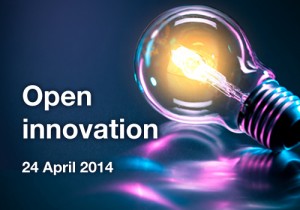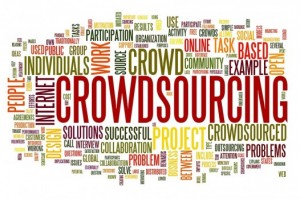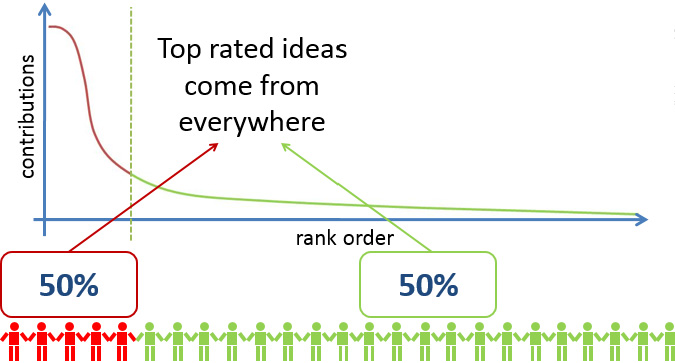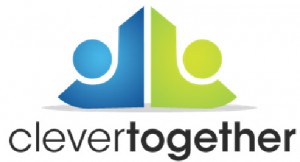The Power of the Crowd
 At our Open Innovation event on 24 April we heard from two excellent speakers about the power of co-creation, crowdsourcing and open innovation.
At our Open Innovation event on 24 April we heard from two excellent speakers about the power of co-creation, crowdsourcing and open innovation.
If you couldn’t make the event – or if you want a reminder of his 5-star rated presentation – speaker, Dr Peter Thomond, the managing partner of Clever Together, follows up the event by sharing his insights on crowdsourcing with case studies to illustrate its value.
“Crowdsourcing has become an innovation buzzword but what does it actually mean? How can it be used? And how can it benefit you and your organisation?
We define crowdsourcing as:

A process by which the power of the many can be harnessed, via technology, to build and to innovate.
The traditional approaches of strategy design and market research have been turned on their head. Technology has enabled us to interact directly with a crowd, gather feedback and allow the crowd to vote for the best ideas. In a very short space of time, it is now possible to source, collect, prioritise, assess and act upon ideas. Crowdsourcing as a process enables us to engage and receive feedback from people who are time constrained and or geographically dispersed – it takes weeks or months to bring people into a room together, the era of relying exclusively on these face to face meetings is dead. Crowdsourcing dramatically reduces the costs of engaging and reaching out to staff, customers and your networks.
At Clever Together we use crowdsourcing to deliver three very specific outcomes:
Strategic turnarounds – We help chief executives to redefine values, visions and strategies enabling an organisation to plan for their future, twice as fast, at half the cost and with a heap more employee engagement. By making a workforce part of this process, executives can create a strategy that is informed by people’s real experiences and values. This process engages the workforce who then become ambassadors and enablers of change, rather than the subject of change or even resistors.
Problem solving – We help business leaders to find solutions for their specific challenges. Using rapid en mass engagement we enable their people to generate more ideas, validate better solutions and get into action faster.
Insight – We engage large groups of people to generate penetrating insights, which can guide performance or transformation.
So what have we learned?
The foundation of our highly focused approach to crowdsourcing consists of three parts:
- The right strategy – it is essential to know: what you want from your crowd before you begin speaking to them; what actions you are going to take as a result; how you are going to measure success. It is also necessary to be clear about how this will help you to deliver your strategic objectives and have a clear scope i.e. what this project will not do.
- The right process – At Clever Together we have a 6 and 8 step method that can be tailored to get the best results from any crowdsourcing project. In both contexts it boils down to three phases:
- We begin with a communications campaign to share a challenge and engage our crowd.
- We then deploy and facilitate a social website – this acts as a collaborative platform for people to share ideas, comment on others and vote for the best.
- Finally we use a smart analytical process to convert inputs into outputs and outputs into actions.
- The right technology – this is the easy bit – we deploy and customise a platform for each client which is intuitive and easy to use – facilitating the largest number of people to be able to engage with the challenge.
A crowdsourcing campaign needs the right environment for success
- The crowd needs to be engaged with the issue up for discussion and motivated to contribute to the challenge
- The crowd needs to be engaged with the organisation delivering the campaign
- The crowd need to trust that it is safe for them to contribute and have a belief and understanding that their ideas will be actioned upon
- The crowd need access to the technology and the capability to use it
It can be disruptive
When using crowdsourcing to solve difficult challenges or to turn around troubled organisations, it often becomes apparent what or who the barriers to change are within an organisation; these may need to be removed to deliver the change you seek, this requires brave leadership.
Half your best ideas hide in the crowd
One of the most interesting things we have discovered is that 50% of the best ideas lie within your silent majority that would not normally contribute at a workshop or conference.

An online crowdsourcing platform enables these people to be heard and these ideas to be captured.
Crowdsourcing accelerates change and creates more buy-in with less hassle
When people are connected together and able to judge ideas based on their value rather than the author – great ideas can be acted upon faster with buy in from the crowd – this provides organisations with an efficient process of transformation.
Questions are king
When posing a question to a crowd, never pose a problem based challenge. Solution orientated questions can deliver profound insight, amazing solutions and buy in to strategic change.
The mean is meaningless
Quality is more important that quantity. If the right audience is engaged and offered a compelling challenge – focus on the quality of their contributions not the quantity.
Case study 1: The Leeds Way – transforming health in Leeds
Leeds Teaching Hospital NHS Trust is an enormous organisation, employing over 16,000 people and costing £3 million a day to run. With a new chief executive at the helm there was a need to redefine the values and vision of the Trust to move towards becoming the best NHS Trust. They decided to enact change by engaging their workforce to find out what they felt the values and vision of the Trust should be. This resulted in The Leeds Way a call to arms and a tool, which presents the shared agreement on the core values and the vision of the Trust that everyone should be working towards, and how they are going to get there. It has been developed as the result of over 40,000 contributions from staff.
Case study 2: HSJ – generating strategic insight
We worked with the Health Services Journal to engage selected readers to gather insight on the government’s plans to introduce 24/7 working in the NHS.
 Challenge posed: What are the behaviour and process changes you believe are needed for the NHS to deliver, consistent, financially sustainable 24/7 working?
Challenge posed: What are the behaviour and process changes you believe are needed for the NHS to deliver, consistent, financially sustainable 24/7 working?
To structure responses we provided a number of different streams for people to contribute within, including: communications and expectations; structural changes; staffing and management; care delivery and other responses.
HSJ engaged selected readers to share ideas, vote and comment anonymously. From a standing start the project was designed, delivered and evaluated in under four weeks and 1083 people were engaged providing 6118 contributions. The geographic breadth of contributors was remarkably broad – this is a perfect example of the benefit of a digital platform.

HSJ then turned the insights provided into a dedicated magazine issue – giving voice to the ideas and looking at the practical measures needed to move towards 24/7 working.
Case study 3: International Banking
Clever Together is helping a large international bank transform their UK division. They now have a six stage innovation process that captures the collective intelligence of all their people.
- Idea generation – all staff can submit ideas and suggestions to drive the organisation forward via the challenge led crowdsourcing platform and a digital suggestion box
- Crowd prioritise ideas – the ideas provided are rated and voted for by the crowd
- Expert triage – the ideas with the most support from the crowd are categorised by strategic and business change leads as:
- In plan /quick wins – can be implemented immediately to provide an instant outcome
- High potential ideas – great ideas that require a bit more planning for implementation
- On hold – good ideas but not suitable for implementation now
- Kill – no go area
- Crowd develops ideas – the crowd then develops and votes on the high potential ideas to build and prioritise the business cases and develop employee buy in
- Executive approval – approval of the best ideas for delivery
- Delivery and communications – the best ideas are delivered and the crowd is told how and why their ideas were acted upon. “
Clever Together
 Clever Together was conceived by Peter Thomond and Robin Vickers who share a common and binding belief: internet-based collaboration technologies, combined with clear deployment strategies, could disrupt a significant part of the traditional consultancy and advisory market and create much greater value for organisations. Robin had worked as a consultant for 8-years (Accenture then Hedra and Mouchel) designing business strategies and delivering large scale change and IT programmes, with a strong focus in healthcare and experience of retail. Pete had enjoyed an 8-year career as an academic (Cranfield University and the Queensland University of technology) and independent innovation advisor, researching and designing innovation strategies, researching and delivering improvement programmes, and enabling ‘high-involvement’ innovation through ideation technology and large scale workshop processes. www.clevertogether.com
Clever Together was conceived by Peter Thomond and Robin Vickers who share a common and binding belief: internet-based collaboration technologies, combined with clear deployment strategies, could disrupt a significant part of the traditional consultancy and advisory market and create much greater value for organisations. Robin had worked as a consultant for 8-years (Accenture then Hedra and Mouchel) designing business strategies and delivering large scale change and IT programmes, with a strong focus in healthcare and experience of retail. Pete had enjoyed an 8-year career as an academic (Cranfield University and the Queensland University of technology) and independent innovation advisor, researching and designing innovation strategies, researching and delivering improvement programmes, and enabling ‘high-involvement’ innovation through ideation technology and large scale workshop processes. www.clevertogether.com
You can follow @clever_together or @PeteThomond and find them on LinkedIn

